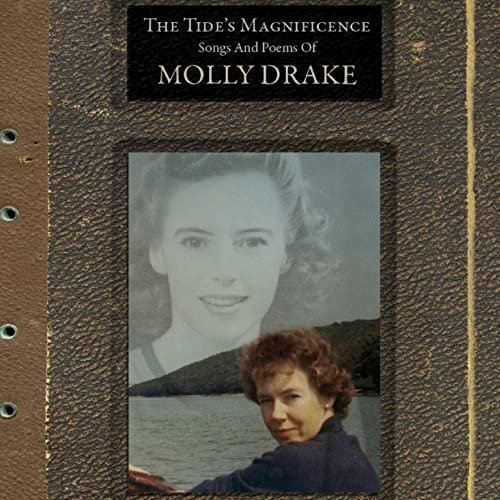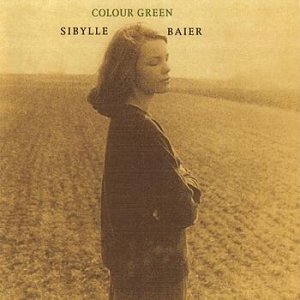Forgotten while you’re here, remembered for a while: 5 ‘lost’ female singer-songwriter gems
By Liliana Potter
The timing might have been inopportune, the cultural zeitgeist narrowly missed, an audience may never have even been in mind; certain songs, despite best efforts, are simply sung for nobody. However, there’s no knowing when a hidden gem, after laying underground for years and years, can be unearthed decades later by keen-eyed magpies. These gentle treasures from the outsiders of the 60s/70s singer-songwriter movement - heavy-hearted, yearning, often celebrating nature - have reunited with an audience of modern-day folk lovers that was missed by their initial release. For every Carole King and Joni Mitchell, there’s a Vashti Bunyan or a Connie Converse, unique and underappreciated until their bottled messages washed up at shore; let’s blow the dust off a few of these lost-and-found sounds.
Vashti Bunyan’s Just Another Diamond Day is perhaps the exemplar lost folk album, with artists such as Devendra Banhart, Fleet Foxes’ Robin Pecknold and Joanna Newsom owing to its influence. After finding little success with an initial foray into 60s London’s pop scene, Vashti (along with her boyfriend Robert, their dog, and a guitar) undertook a horse-and-wagon pilgrimage to the Hebrides, dreaming of an off-the-grid existence in the artist’s commune of fellow singer-songwriter Donovan. As it turned out, Vashti’s pastoral dream unravelled like a scarf on a nail; the caravan was cold, people were hostile towards their nomadic lifestyle, and by the time they arrived at the commune (it took them a year and a half) Donovan had left, and there was nowhere to stay. Just Another Diamond Day, recorded in three days upon her return, documents the trip - tranquil dreamscapes of glow worms, swallows, and lily ponds, lullabies woven through with a sense of melancholy which led an initial reviewer to say it made him inexplicably depressed. This unfavourable review, amongst the general cold reception and lack of promotion the album received, devastated Bunyan. Believing her efforts to have been a terrible failure, she turned her back on music, unable to listen to the album. 30 years passed in self-imposed musical exile without Vashti ever singing, even to her children, musical past presumably entirely forgotten. Then, something strange - the turn of the century saw Bunyan onto the early Internet, where she found Diamond Day not to have been forgotten after all. In fact, it was now a holy grail collector’s album, with original vinyl copies selling for thousands online, and forums of folk fans puzzling over where she’d disappeared since its release. The kind words she found there, a far cry from the initial apathy with which the album was first received, were what it took to finally encourage Vashti towards a reunion with music; Just Another Diamond Day was reissued on CD in 2000, followed by the 35-year awaited follow-up album Lookaftering in 2005. The homespun aesthetic, wispy vocals and wide-eyed whimsy dismissed as nursery rhyme fodder in 1970 were at last rediscovered, newfound interest inspiring Bunyan to take full creative control (she didn’t have a hand in Diamond Day’s production, admitting in interviews to never having fully connected with the ‘folk’ label) and incorporate more electronic elements in her work post-hiatus. Joyfully reunited with the ability to express herself creatively, Vashti’s next endeavour is a memoir of her life on the road and beyond, to be published in 2022 - fittingly, putting to paper the unlikely fable of her musical journey.
There are echoes of Bunyan’s story in a small movement of similarly left-of-field folk women of the era; riding the coattails of the post-Dylan 60s, arriving just a little late to the hippie movement’s folk zeitgeist for commercial success. Take Linda Perhacs’ 1970 psychedelic folk masterpiece Parallelograms, again enabled by the Internet to develop a cult following 30 years delayed, all while a modestly unaware Perhacs worked as a dental hygienist. Parallelograms layers shimmering vocal harmony and looping guitar figures, alongside more experimental moments (check out that sudden vibe change in the middle of the title track if you want something to be violently awoken by on your napping playlist), reflecting your world through its peculiar lens like light through a glass prism.
Connie Converse stands apart as perhaps one of the first singer-songwriters, with reel-to-reel recordings of her songs dating back to the mid 1950s. The mythos of her work - startlingly ahead of its time, wryly funny and personal vignettes accompanied only by guitar - is inseparable from the mystery of her disappearance; one day, Converse wrote letters to friends and family expressing a need to start anew, packed up her belongings, and simply drove away, never to be seen again. In 2009, following a radio show feature which inspired two listeners to track down her lost recordings, How Sad, How Lovely was compiled and released. It includes 18 songs which never found mainstream success at their time, home-recorded to tape by Connie and her friends in 50s New York; their super lo-fi aesthetic and witty, detached perspective is laced with moments of matter-of-fact vulnerability which put me particularly in mind of Kimya Dawson. Try Playboy of the Western World for some particularly lovely chords, or Two Tall Mountains for a drier flavour of Vashti Bunyan’s pastoralism (“up that tree there’s sort of a squirrel thing/sounds just like we did when we were quarreling”).
For many, Molly Drake’s musical legacy is inseparable from that of her son, enigmatic folk singer-songwriter Nick Drake. The release of her 1950s home recordings came as a result of the posthumous cult interest in Nick’s music, and The Tide’s Magnificence: Songs and Poems of Molly Drake, released in 2018, clearly reveals a melancholic, observant introversion common to the two. However, the perspective of Molly’s songs stands alone - her soft, 50s-formal vocals and minor-key piano wrench you with their retrospective yearning, frequently reflecting back over her life pre- and post-motherhood (“did I not notice when the year was young?”, she sings on Cuckoo Time). In looking regretfully at ambitions unfulfilled, Poor Mum serves as a chilling, unsanitized reminder of the sacrifices made for family life, particularly in the restrictive 1950s: “nothing worked out in the way you planned, nothing was quite as you thought (...) / joy as it flies cannot be caught”. In their honesty, sadness, and fixation on memory, the songs of Molly Drake evoke a similar feeling to looking at photos of a parent when they were your age, illuminating vivid details from the life of a woman often painted in broad strokes (by Wikipedia, at least) in relation to her children.
Colour Green was recorded in the early 70s by a then 18-year old Sibylle Baier, her somber songs arising from a low period when a friend attempted to cheer her up with a trip through Europe. Her voice is a direct, unaffected alto (its tone reminded me a little of Nico, or fellow 70s singer-writer Bridget St John), accompanied by simple plucked guitar. The straightforward plainness of her delivery and familiarity of the subject matter - kitchen table encounters, hillside scenes, small details paused and lingered over - disarm you from Colour Green’s inarticulable emotional complexity. 30 years after its recording, Baier’s son discovered the album and made CDs for their family, passing one copy to an industry contact which led to the album’s final release in 2006, out of its hibernation to soundtrack sadgirl road trips for years to come.
The music of Sibylle Baier and Molly Drake didn’t intend to find an audience, with their respective families setting into motion the unearthing and release of their albums. The resulting recordings are intimate, nostalgic, permeated by an atmosphere of deep sadness which hangs over each slice of life scene like autumn smoke; made all the more personal by the fact they never were made to be heard.
These bittersweet, belated unions of artist and audience provide a hopeful antidote to the algorithm worship currently foisted upon aspiring artists, demanding constant content. They show us it’s okay to figure things out on your own time, away from industry games or even any audience at all; that it’s never too late to find appreciation for your art, even after believing it to have been a failure for years and years. I demand you give at least one of them a try. In fact, if I may, let me tailor you a recommendation:
Quiz:
Answer these 5 questions and I’ll assign you a cult 1950s-70s female singer-songwriter album
1) What’s your intended wistful listening experience for your prescribed album?
A) Just you, your record player, and a few wistful smokes.
B) Walking wistfully barefoot on East Sands, pondering the ocean’s indifference with awe.
C) To the lade braes on a wistful autumn day, to wander over fallen leaves.
D) Overhearing it in a city bookshop, overcome by potent wist.
E) Baking a wistful, cat-shaped loaf of bread and giving it little tomatoes from your garden for eyes.
2) Out walking, you have only one photo left in your black-and-white film camera: what pastoral sight are you capturing?
A) A mother bird and her chicks in their nest
B) The nearest source of running water
C) The view from high up a hill as the sun sets over the little town
D) A rodent skeleton you find in a cave and adorn with flower heads
E) Your dog, shaking the mud off her back
3) Ok, let’s cut the niceties: what’s your biggest flaw?
A) People assume all sorts of mean things about me because of my cut-glass accent
B) I am constantly permatripping on life
C) I come across cold and aloof but actually I’m just extremely wistful
D) I’m a genius but not doing great mentally
E) A sentimental tendency to over romanticise the aspects of my life which really don’t need it
4) You’re sitting at your regular window seat at the local coffeehouse, observing passers by with a detached curiosity; o how they hurry to and fro about their daily business, like wayward clouds scudding on the autumn breeze. You sip your drink wistfully; but what was your order?
A) Earl grey with a slice of lemon
B) Hibiscus green tea
C) Black filter coffee and a piece of buttered bread
D) Espresso and a paperback
E) Breakfast tea with oat milk and a sugarcube
5) Your favourite season?
A) Late autumn
B) Summer
C) Early autumn
D) Winter
E) Spring
Results:
Mostly A’s: The Tide’s Magnificence: Songs and Poems of Molly Drake - Molly Drake
You have this jaded world-weariness to you which Ms Drake is sooooo perfect for. It’s okay, troubled one, set down your burden for 51 mins or so. The library will still be there for you once you’re done.
Mostly B’s: Parallelograms - Linda Perhacs
You’re probably a little odd, Parallelograms will get you. A weird wistful girl album for only the VERY weirdest most wistful girls, which is you I suppose - congratulations?
Mostly C’s: Colour Green - Sibylle Baier
Woah sorry, did a double take just there! Didn’t realise I was in the presence of someone so cool and mysterious. Up til now I thought I was literate, but girl your demeanour is unreadable. I’m sure you’ll connect with Colour Green in that way.
Mostly D’s: How Sad, How Lovely - Connie Converse
Hey, you good? The ol’ gifted kid burnout hitting especially hard this time of year? Check in with yourself while you give this one a spin, have you been drinking enough water? Connie cares.
Mostly E’s: Just Another Diamond Day - Vashti Bunyan
You’re a sucka for domesticity, you’ve definitely baked something in the last month and probably have a passing familiarity with crochet - Just Another Diamond Day is the perfect record for you! That is, if you can stay off cottagecore TikTok long enough to listen to it through.






